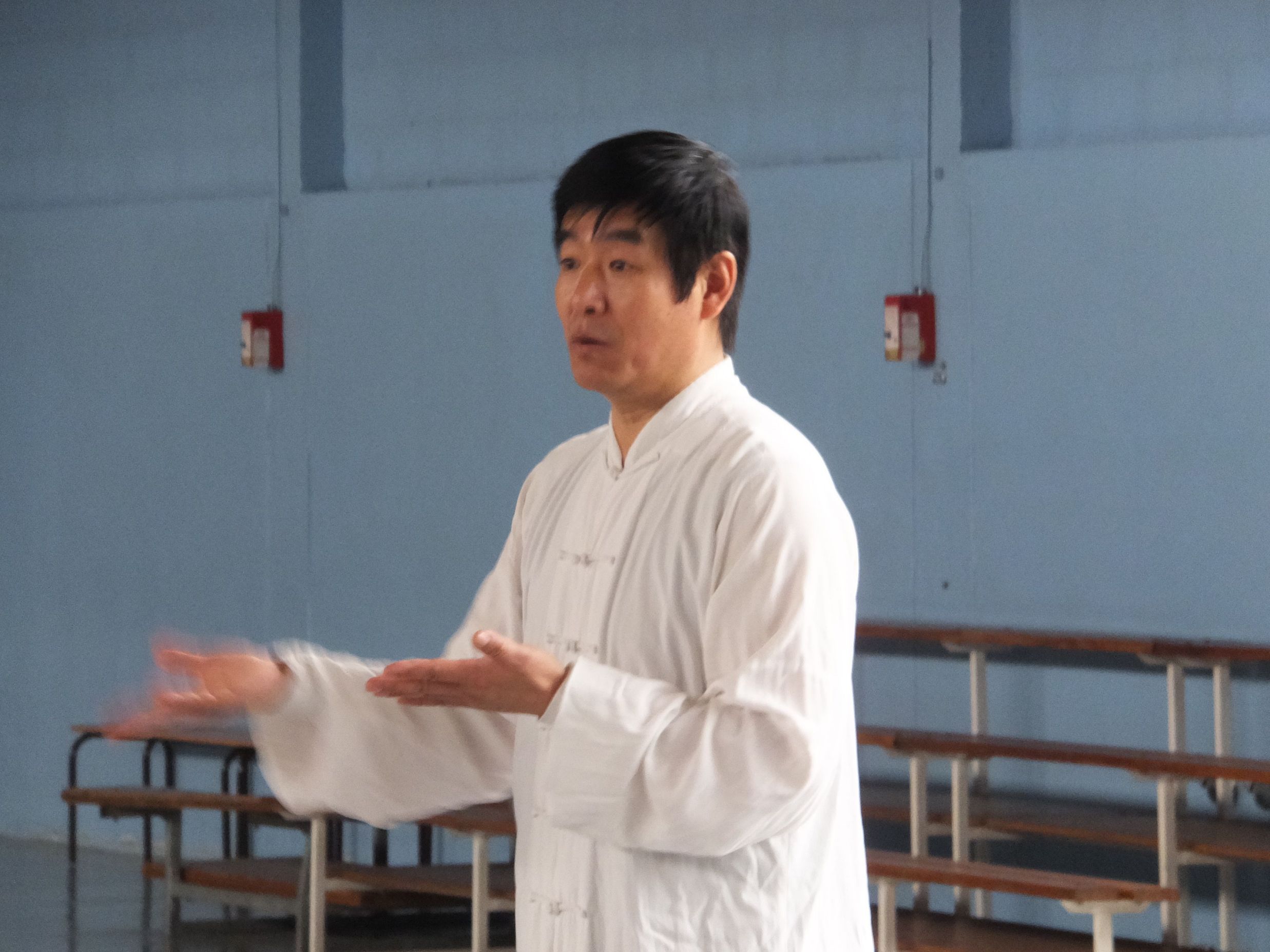TAICHI CHUAN STYLE ZHAOBAO
Tai Chi Chuan Zhaobao style originates from the town of Zhaobao, in Wenxian county, about 4 km from Chenjiaggou, village of the Chen family, in Henan province, the cradle of Chinese civilization and martial arts.
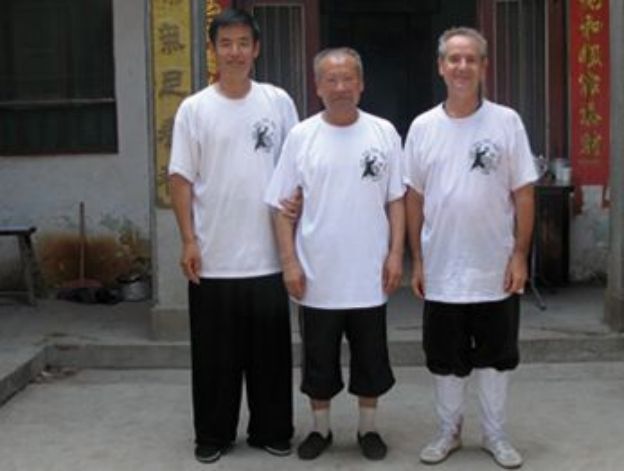
The Zhaobao style is often considered to be derived from the Chen family style of Tai Chi Chuan. It is said to have been created by Chen Qing Ping (1795-1868).
Today, however, the old masters of the Zhaobao school agree on a more ancient origin, independent of the Chen clan lineage, going back to Jiang Fa.
Jiang Fa (1st generation of Tai Chi Chuan Zhaobao) is said to have learned Tai Chi Chuan fighting from Wang Zongyue, then taught it in the Zhaobao region.
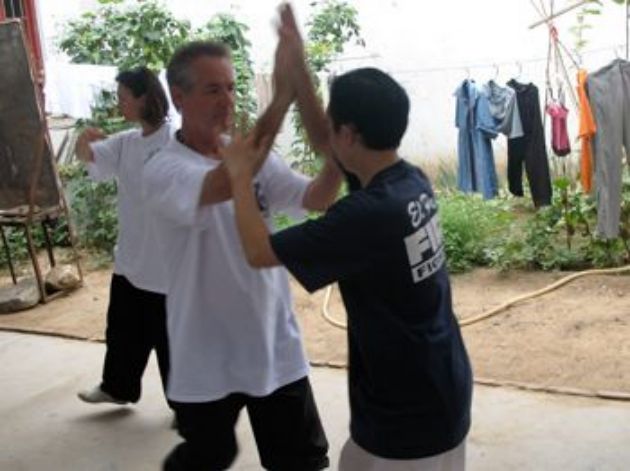
Wang Zongyue
Jiang Fa (1st generation)
Xing Xihaui (2nd generation)
Zhang Chuchen (3rd generation)
Chen Jingbo (4th generation)
Zhang Zhongyu (5th generation)
Zhang Yan (6th generation)
Chen Qingping (7th generation)
Zhang Jingzhi (8th generation)
Chen Yingmimg (9th generation)
Unlike the other Tai Chi Chuan schools: Chen, Yang, Sun, Wu, whose name comes from a family and in which teaching was reserved for clan members, the Tai Chi Zhaobao school takes its name from the village of Zhaobao, and transmission was from master to disciple. A museum has recently been set up by the town in memory of the Zhaobao masters.
This is a traditional Henan style of Tai Chi Chuan, of which Master Zhang Ai Jun (11th generation) is the only master currently teaching in France.
Despite its ancient origins, Tai Chi Chuan Zhaobao, practised in Henan, remained for a long time in the shadows and little known outside its province of origin. Its teaching has only spread in China in the last fifteen years, thanks in part to Master Wang Qing Sheng and his disciples, including Master Zhang Ai Jun.
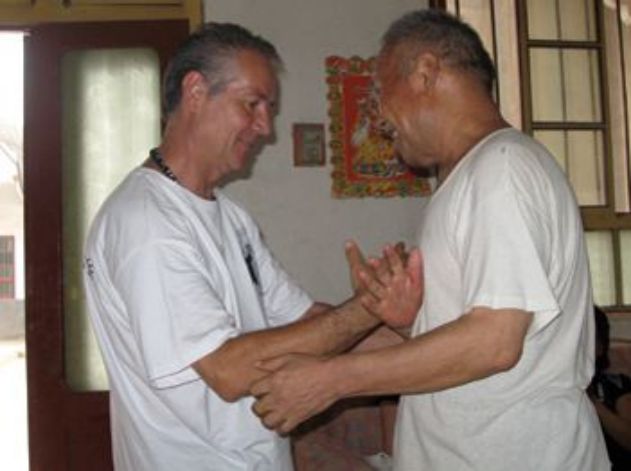
While appreciating the value of each of the Chen and Yang styles he teaches, and striving to pass on the foundations of the tradition through the ancient taolus "laojia Yilu" (1st ancient unarmed sequence of the Chen family) and the traditional long sequence "108" of the Yang family, Master Zhang Ai Jun remains very attached to the Zhaobao school, and more particularly to the taolu of the 72 Zhaobao Movements: "It's the form I prefer, because it hasn't undergone any changes since it's been around, and I think it should stay that way".*
We practice the traditional form of the 72 Movements, combining the characteristics of the Zhaobao style:
If you watch a practitioner practicing, you'll immediately notice the very martial aspect of this style. The practice involves a strong flow of energy throughout the body.
The legs are very much in demand, with low stances and a great deal of coordination with the arms. Gestures are broad and circular.
Work on the shoulders and hips is markedly rounded, led/carried by a strong rooting of the lower limbs.
The positioning of the feet during movement is extremely important: the feet must remain "alive", supple and agile.
Particular attention is paid to keeping the spine straight, with the back and head in line with the Dan Tian, an essential point of balance in the Zhaobao form.
Breathing is fluid and natural.
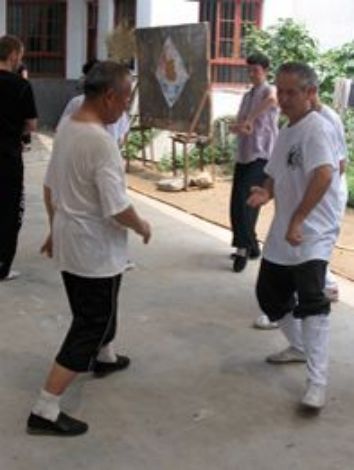
"Relaxing the shoulders is essential, and so is tucking the chin in, horse-style, as this allows energy to circulate and the right balance to be found. You must always be firmly anchored to the ground and keep your upper body relaxed, executing movements with great breadth and fluidity, without tensing up "*
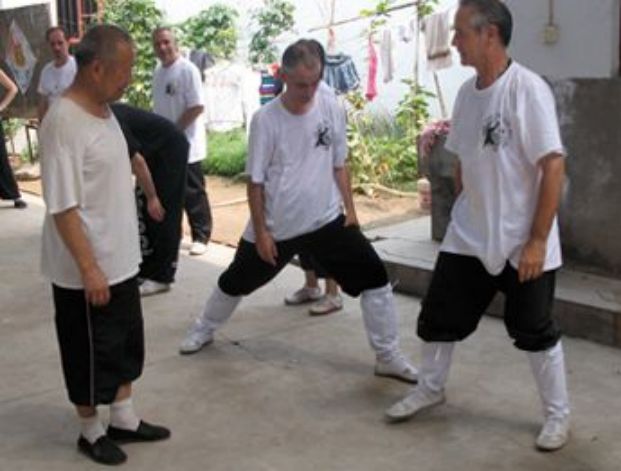
It's a style for everyone. As with other styles of Tai Chi, you can practice in low, medium or high stances (Zhaobao style, for those with the most "legs", is almost at ground level!), and adapt the speed at which techniques are performed.
